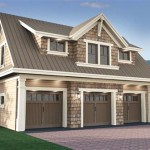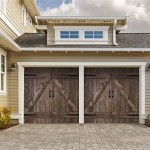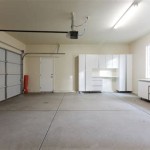Turning Your Garage Into a Home Theater: A Step-by-Step Guide
A home theater offers an unparalleled cinematic experience, allowing you to indulge in your favorite movies and shows in the comfort of your own home. But what if you’re limited on space? Converting your garage into a home theater can be a fantastic solution, providing ample room for seating, a large screen, and immersive sound. This guide will walk you through the essential steps to transform your garage into the ultimate entertainment space.
1. Planning and Preparation
Before diving into construction, thorough planning is essential. First, assess the condition of your garage. Is it insulated? Does it have adequate electrical wiring? Consider the size of the space and how many people you want to accommodate. It’s also crucial to determine the budget for your project to ensure you stay within financial constraints.
Next, think about the specific features you desire in your home theater. Do you want a projector or a large television? Are you planning on a surround sound system or a simpler setup? Consider the desired seating arrangement, including the number of seats and the type of seating. Creating a detailed blueprint or schematic can help visualize the layout and ensure proper placement of equipment.
2. Garage Conversion Essentials
Once your plan is in place, you can start converting your garage. Here are some fundamental steps to consider:
A. Insulation and Climate Control
Garages are notoriously drafty and poorly insulated, which can negatively affect sound quality and comfort. Adding insulation to the walls, ceiling, and doors will significantly improve the acoustics and maintain a consistent temperature, ensuring optimal viewing conditions.
B. Electrical Upgrades
A home theater requires substantial electrical power to operate a projector, screen, and audio system. Assess your current electrical wiring and make any necessary upgrades. Consider adding dedicated circuits for your equipment to ensure sufficient power and minimize interference.
C. Flooring Considerations
The flooring in your garage should be comfortable and appropriate for a home theater. Consider options like carpet, laminate, or hardwood flooring to create a stylish and welcoming ambiance. Additionally, soundproofing materials like rubber underlayment can help minimize noise transmission and vibrations.
3. Designing the Home Theater Experience
The design of your home theater should focus on creating a truly immersive experience. Here are some key areas of focus:
A. The Screen and Projector
The screen is the centerpiece of your home theater, and the projector is the engine that projects the images. Choose a screen size that’s appropriate for the space and your viewing distance. Consider a projector with high resolution, brightness, and contrast for a crisp and detailed picture.
B. Sound System
A well-designed sound system is crucial for an immersive cinematic experience. Consider a surround sound system with multiple speakers positioned around the room to create a multi-dimensional audio experience. Subwoofers add depth and impact to low-frequency sounds.
C. Lighting and Atmosphere
Proper lighting is essential for creating the right ambiance in your home theater. Dimmable lights are ideal for setting the mood and controlling the brightness levels. Consider using LED lights for energy efficiency and long-lasting performance. A darkened room is the standard for optimal viewing, so you may need blackout curtains or blinds.

Before After A Typical Garage Becomes Vibrant Home Theater

Garage Home Theater Ideas You Ll Love Danley S Garages

Before After A Typical Garage Becomes Vibrant Home Theater

Transforming Your Garage Into A Dreamy Home Theater

Krix Helps Turn A Garage Into Home Cinema Connected

How To Convert Your Garage Into A Home Theater

How To Convert A Garage Into Home Theater

7 Garage Conversion Ideas To Transform Your Home Wallsauce

Before After A Typical Garage Becomes Vibrant Home Theater

Home Tour From Boring Garage To Personal Theater Maxable
Related Posts








